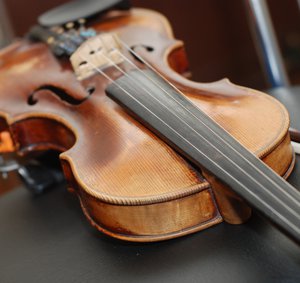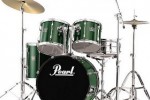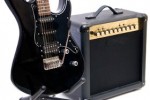Violins are delicate instruments. It is very important to take good care of your violin to ensure optimum performance and to prevent it from damage. Keeping your violin in working condition requires time and attention. Below are a couple of useful tips that will help you keep your violin working in top shape:
Keep it Clean and Spotless!
The first step to maintain a musical instrument is to keep it clean. Whenever your violin gets dusty due to the dust or grime in the air or due to rosin dust, use a fine instrument cloth to clean the violin. Make sure that you clean it on all sides, front and back as well as the strings. It is preferable to use an instrument cloth as it is designed to be soft and gentle on the instrument.
 Violins should be cleaned regularly, preferably after every time you play it. The longer the time lapse between the cleaning, the more difficult it will be to clean the violin. In addition to that, lack of cleaning can stiffen up the violin strings.
Violins should be cleaned regularly, preferably after every time you play it. The longer the time lapse between the cleaning, the more difficult it will be to clean the violin. In addition to that, lack of cleaning can stiffen up the violin strings.
Get a Violin Hanger
Avoid placing your violin in places where you (or others) might regularly sit or walk. Even a table may not be such a good place to keep your violin. To prevent unwanted accidents that might cause damage, it is best to get a wall hanger. This is an inexpensive options — most violin hangers cost around $10 — and will keep your violin safely stowed away.
Place Violin String Side Up
Whenever you place your violin down on a table or a flat surface, make sure that you place it string side up — even if the violin is stowed inside its protective case. This is because the strings usually tend to exert a good amount of pressure onto the instrument via the bridge. Placing the violin face down can increase the possibility of damage and can hamper the performance of the instrument.
Surrounding Temperature
Since violins are made of fine woods, subjecting your violin to extreme temperatures, either hot or cold, can damage your violin or make it go out of tune. It can also cause cracks on the body of the violin. Exposing the violin to the sun for extensive periods of time is also not recommended. Whenever you have to play outdoors, try to play in a shady area or under a tent, away from the direct heat of the sun. Also, try not to leave your violin in the car unattended, regardless of the outside temperature.
Factor Humidity
Another possible factor that can cause damage to your violin is humidity. Humidity can cause the wooden body of your violin to contract and expand. You should make sure that the level of humidity remains stable around your violin at all times. A lack of humidity in winter can also damage your violin. To solve this, you can use devices to humidify your home during winters.
Another option can be to use in-case violin humidifiers which can keep the humidity around the violin stable inside its case. This will prevent the violin from getting damaged or having any tuning issues.
Keep Your Violin Strings Fresh
It is recommended to change the strings of your violin after every 12 months. This will keep the violin working perfectly. It is better to ask an expert violinist for assistance if you are a beginner. An experienced violinist will be able to teach you how the strings are changed.
Care for Your Violin Bow
You need to re-hair your bow regularly, depending on how often you play your instrument. When you play the violin, the oils in your fingers tend to make the bow hair slippery. This will prevent the violin rosin from sticking. This is when you need to re-hair your bow.
Taking care of your violin will increase its lifespan. It will also keep producing good sound quality and will not get damaged carelessly.





